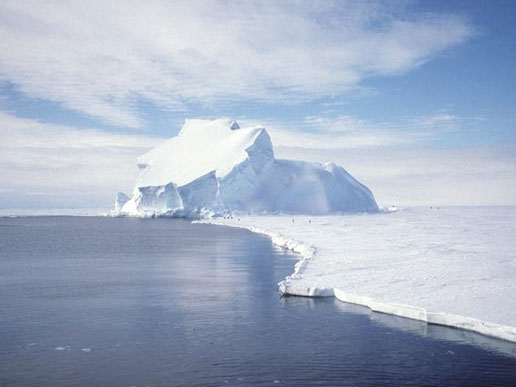Floods Beneath Antarctica’s Ice Sheet Create a Glacial Slip-and-Slide
 A new study, that involved tracking of recent floods beneath the Byrd Glacier, has claimed that deep beneath the Antarctic ice sheet, floods of water from buried lakes can hurry glaciers along on their slow slide towards the sea. According to Andy Smith of the British Antarctic Survey, who was not involved in this latest study, "It's like putting in a squirt of oil. The water lubricates the base of the glacier."
A new study, that involved tracking of recent floods beneath the Byrd Glacier, has claimed that deep beneath the Antarctic ice sheet, floods of water from buried lakes can hurry glaciers along on their slow slide towards the sea. According to Andy Smith of the British Antarctic Survey, who was not involved in this latest study, "It's like putting in a squirt of oil. The water lubricates the base of the glacier."
The latest findings will definitely help the researchers in analyzing the movement of glaciers around the world. This is quite important for the climate scientists, who are studying the adverse affects of global warming on the melting of ice sheets into ocean.
Its only recently that the researchers had discovered that inaccessible subglacial lakes in Antarctica, periodically shed huge quantities of water. Back in 2003, a satellite was launched for the purpose of collecting data, and it discovered a complex network of subglacial plumbing, in which water periodically cascades from one hidden reservoir to another. Surprisingly, the water in the lake remain in the form of liquid, even when being buried beneath a mile of ice in some places, due to the warmth from the underlying rock. The researchers have now put forward the fact that these hidden floods affect the thick mountains of ice above.
"Researchers measured the elevation of the ice in the Byrd Glacier by satellite. When the subglacial lakes fill up, they raise the elevation of the ice above them, and when the water spills over in a flood, the elevation sinks again, allowing researchers to track the water," as reported in Nature Geoscience.
Researchers observed a quick change in the ice elevation that coincided with a marked increase in the speed of the ice flow between December 2005 and February 2007. However, when the flood ceased and the lakes began to refill, the movement of the glacier slowed.
Researchers lay stress on the point that the floods beneath the Byrd Glacier were not caused by global warming. "The lakes probably flood and drain on a regular basis that has nothing to do with atmospheric or ocean warming," they said.
They further added, "The mechanisms involved need to be understood, so the knowledge can be applied to those ice masses which are being exposed to warmer temperatures, such as in Greenland."
"One of the great unknowns regarding climate change is what proportion of the world's ice sheets will melt into the ocean, and how much that will raise sea levels," reported the International Panel on Climate Change (IPCC).